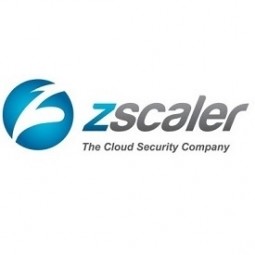Accelerating Cloud Adoption and Enhancing Staff Flexibility: A Case Study on Commonwealth Grants Commission

Technology Category
- Infrastructure as a Service (IaaS) - Cloud Databases
- Sensors - GPS
Applicable Industries
- Buildings
- Cities & Municipalities
Use Cases
- Personnel Tracking & Monitoring
- Tamper Detection
Services
- Cloud Planning, Design & Implementation Services
About The Customer
The Commonwealth Grants Commission (CGC) is an independent statutory body established in 1933. It advises the Australian Government on financial assistance for the nation’s states and territories. Initially, the CGC provided advice regarding grants made by the Commonwealth Government. Since the Goods and Services Tax (GST) was introduced in 1999, the CGC now advises on how this source of revenue should be distributed. The CGC's staff had been relying on a secure internet gateway (SIG) service based on a 10Mbps network link, which was the only link with the outside world.
The Challenge
The Commonwealth Grants Commission (CGC), an independent statutory body advising the Australian Government on financial assistance for states and territories, was facing a significant challenge with its aging access infrastructure. For several years, the CGC’s staff had relied on a secure internet gateway (SIG) service based on a 10Mbps network link. This SIG was the only link with the outside world, and congestion and performance had gradually become a significant issue. The move to the cloud was part of an 'anywhere, anytime, any device' strategy adopted by the organization to maintain business continuity and rapidly support staff wherever they may be located. There was also a plan to shift into new premises in about 18 months and a need to improve performance to access cloud-based solutions.
The Solution
In response to these challenges, the CGC IT team, in collaboration with a technology partner, examined a range of solutions as part of a larger project that involved migrating from the existing, on-premise hardware to the Azure cloud and the adoption of Microsoft Office 365. The team commissioned a new gigabit network link and deployed Zscaler over the top. The partnership with Microsoft enabled core applications to be migrated to Azure and all staff equipped with a subscription to Office 365 E5 cloud-based suite of productivity apps combined with advanced voice, analytics, security, and compliance services. The project began in late 2019 and was completed early in 2020. An IRAP assessment provided government agencies with confidence in Zscaler’s suitability for processing, storing, or communicating sensitive information, making it easier for agencies to evaluate and adopt the technology.
Operational Impact

Case Study missing?
Start adding your own!
Register with your work email and create a new case study profile for your business.
Related Case Studies.

Case Study
Turning A Stadium Into A Smart Building
Honeywell created what it called the “intelligent system” for the National Stadium in Beijing, China, turning the venue for the opening and closing events at the 2008 Summer Olympics into a “smart building.” Designed by highly controversial artist Ai Weiwei, the “Bird’s Nest” remains one of the most impressive feats of stadium architecture in the world. The 250,000 square meter structure housed more than 100,000 athletes and spectators at a time. To accommodate such capacity, China turned to Honeywell’s EBI Integrated Building Management System to create an integrated “intelligent system” for improved building security, safety and energy efficiency.

Case Study
Energy Saving & Power Monitoring System
Recently a university in Taiwan was experiencing dramatic power usage increases due to its growing number of campus buildings and students. Aiming to analyze their power consumption and increase their power efficiency across 52 buildings, the university wanted to build a power management system utilizing web-based hardware and software. With these goals in mind, they contacted Advantech to help them develop their system and provide them with the means to save energy in the years to come.
.png)
Case Study
Smart Street Light Network (Copenhagen)
Key stakeholders are taking a comprehensive approach to rethinking smart city innovation. City leaders have collaborated through partnerships involving government, research institutions and solution providers. The Copenhagen Solutions Lab is one of the leading organizations at the forefront of this movement. By bringing together manufacturers with municipal buyers, the Copenhagen Solutions Lab has catalyzed the development and deployment of next-generation smart city innovations. Copenhagen is leveraging this unique approach to accelerate the implementation of smart city solutions. One of the primary focus areas is LED street lighting.

Case Study
Buoy Status Monitoring with LoRa
The Netherlands are well-known for their inland waterways, canals, sluices and of course port activities. The Dutch Ministry of Infrastructure indicates that there are thousands of buoys and fixed items in and near water environments that would profit from IoT monitoring. One of the problems with buoys for example, is that they get hit by ships and the anchor cable breaks. Without connectivity, it takes quite some time to find out that something has happened with that buoy. Not to mention the costs of renting a boat to go to the buoy to fix it. Another important issue, is that there is no real-time monitoring of the buoys at this moment. Only by physically visiting the object on the water, one gains insight in its status.

Case Study
Barcelona Case Study
Barcelona’s heavy traffic and its associated high levels of pollution were the primary factors that motivated some companies and universities to work on strategies for improving traffic in the city centre. Bitcarrier is one of the technologies involved in the In4Mo Project, whose main objective is to develop the applications that form the core of smart mobility, one of the fundamental pillars of the smart city concept.







